How to Grow and Care for Geranium nodosum
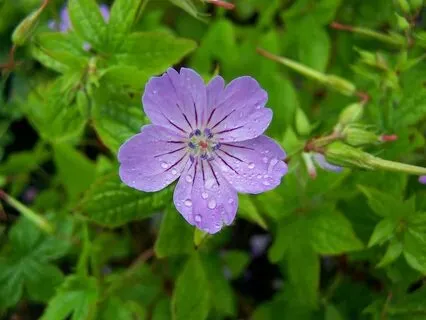
Geranium nodosum, commonly known as knotted crane’s-bill, is a perennial plant cherished for its delicate beauty and ease of care. Its name is derived from the Greek word “geranos,” meaning crane, due to the beak-like appearance of its seed capsules. This plant is a favorite among gardeners for its ability to thrive in shaded areas where many other plants struggle. With its dainty pink to lavender flowers and lush, green foliage, Geranium nodosum adds a touch of elegance to any garden.
Understanding Geranium nodosum
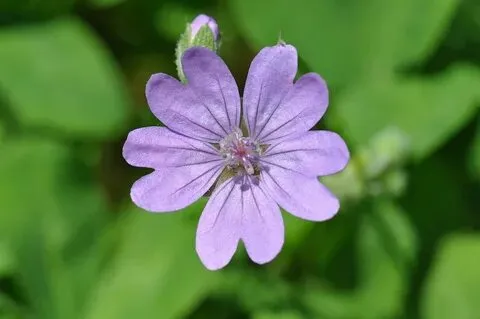
Origin and Natural Habitat
Geranium nodosum is native to the woodlands and mountainous regions of Southern Europe. It flourishes in the undergrowth of forests, thriving in the dappled shade provided by taller trees. This natural habitat gives us insights into the plant’s preferences, helping us replicate ideal growing conditions in our gardens.
Unique Characteristics
One of the standout features of Geranium nodosum is its resilience. It can tolerate a range of soil conditions, from slightly acidic to alkaline, and is relatively drought-tolerant once established. The plant’s ability to form dense ground cover makes it an excellent choice for suppressing weeds. Additionally, its flowers, which bloom from late spring to early autumn, attract pollinators such as bees and butterflies, enhancing the biodiversity of your garden.
Planting Geranium nodosum
When planting Geranium nodosum, choose a location that mimics its natural woodland habitat. This means selecting a spot with partial to full shade and well-draining soil. The planting hole should be twice the width of the root ball and just as deep. After placing the plant in the hole, backfill with soil and water thoroughly to settle the roots.
Geranium nodosum Care
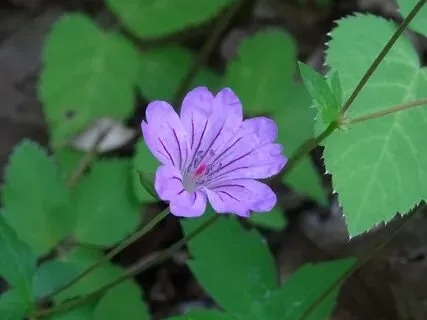
Light Requirements
Geranium nodosum thrives in partial to full shade, making it an ideal choice for gardens with limited sunlight. However, it can tolerate some morning sun, provided it is protected from the harsh afternoon rays. In my garden, I found that planting Geranium nodosum under the canopy of a large oak tree provided the perfect balance of light and shade.
Soil Mix
This plant is quite adaptable to different soil types, though it prefers well-draining soil. In my experience, adding organic matter such as compost or leaf mold improves soil structure and fertility, promoting healthy growth. Avoid waterlogged areas, as excess moisture can lead to root rot.
Water Requirements
Geranium nodosum requires moderate watering, especially during its initial establishment period. Once established, it is relatively drought-tolerant. I water my plants deeply once a week during dry spells, ensuring the soil remains consistently moist but not waterlogged.
Temperature and Humidity
This hardy perennial can withstand a range of temperatures, from mild winters to hot summers. In regions with extreme heat, providing additional mulch around the base of the plant helps retain soil moisture and keep roots cool. Humidity is generally not a concern for Geranium nodosum, making it a versatile choice for various climates.
Fertilizer
A balanced, slow-release fertilizer applied in early spring supports healthy growth and abundant flowering. Over-fertilizing can lead to lush foliage at the expense of blooms. In my garden, I use a compost tea or diluted fish emulsion once a month during the growing season to provide essential nutrients.
Pruning
Regular pruning helps maintain the plant’s shape and encourages reblooming. Deadheading spent flowers prevents seed formation and prolongs the blooming period. In late autumn, cutting back the foliage to the ground helps prepare the plant for winter dormancy.
Popular Varieties of Geranium nodosum
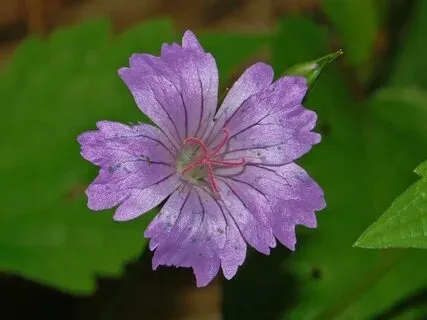
There are several varieties of Geranium nodosum, each with unique characteristics. Some popular ones include:
- Geranium nodosum ‘Svelte Lilac’: Known for its soft lilac flowers and compact growth habit.
- Geranium nodosum ‘Whiteleaf’: Features white flowers with a hint of pink, adding a delicate touch to shaded areas.
- Geranium nodosum ‘Blue Cloud’: Boasts striking blue flowers that contrast beautifully with its green foliage.
Grow and Care for Geranium macrorrhizum
Propagating Geranium nodosum
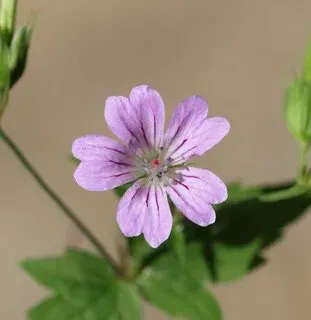
Method 1: Division
This method is ideal for established Geranium nodosum plants and is best done during the dormant period, typically in autumn (fall) or early spring. Here’s how:
- Dig it up: Carefully dig around your Geranium nodosum plant with a spade to loosen the soil and expose the root ball.
- Divide and conquer: Gently lift the entire plant and using a sharp spade, pruning saw, or knife, divide the root ball into several sections. Each section should have a healthy portion of roots and shoots (new growth).
- Replanting: Choose suitable planting locations for your new Geranium nodosum divisions. Dig individual planting holes large enough to accommodate the root ball comfortably. Place each division in its designated hole, ensuring the crown (the point where the roots and stems meet) sits slightly above the soil level.
- Water thoroughly: Water your newly planted Geranium nodosum divisions generously to help them settle in.
Method 2: Stem Cuttings
Propagating Geranium nodosum through stem cuttings is a great way to obtain new plants throughout the growing season. Here’s a step-by-step guide:
- Select your stem: Choose a healthy, non-flowering stem that’s around 4-6 inches long. Look for stems with a few sets of leaves.
- Make the cut: Using sharp, sterilized pruning shears, cut the stem just below a leaf node (the bump where a leaf joins the stem). Make a clean, angled cut to promote healthy root growth.
- Remove lower leaves: Strip off the lower leaves from the stem, leaving only the top two or three sets. This helps minimize water loss and encourages root development.
- Potting up: Prepare a pot filled with a well-draining potting mix. Make a hole in the center slightly deeper than the length of the exposed stem. Dip the cut end of the stem in rooting hormone (optional but can improve success rate) and plant it in the prepared hole.
- Watering and care: Water the pot lightly and place it in a location with bright, indirect sunlight. Keep the soil consistently moist but not soggy.
- Be patient: Rooting can take several weeks. You can gently tug on the stem after a few weeks to check for resistance, indicating root development.
Potting and Repotting
Geranium nodosum can also be grown in containers, making it a versatile addition to patios and balconies. Choose a pot with good drainage and use a high-quality potting mix. Repotting is necessary every two to three years to refresh the soil and accommodate the plant’s growth. In my experience, container-grown plants benefit from more frequent watering and fertilization compared to those planted in the ground.
Common Pests & Plant Diseases

Geranium nodosum is relatively pest-free, though it can occasionally be affected by aphids, slugs, and snails. Regular inspection and the use of organic pest control methods, such as neem oil or hand-picking, help keep these pests at bay. Fungal diseases, such as powdery mildew and rust, can occur in humid conditions. Ensuring good air circulation and avoiding overhead watering can prevent these issues.
Troubleshooting Common Problems

Yellowing Leaves
Yellowing leaves on Geranium nodosum can be caused by several factors, including overwatering, nutrient deficiencies, or poor drainage. To address overwatering, ensure the soil is well-draining and adjust your watering schedule to prevent waterlogged conditions. Water only when the top inch of soil feels dry. For nutrient deficiencies, apply a balanced fertilizer or compost to replenish essential nutrients. Yellowing leaves often indicate a lack of nitrogen, so a fertilizer high in nitrogen can be beneficial. If poor drainage is the issue, improve soil drainage by adding organic matter or sand. If the plant is in a pot, make sure the container has adequate drainage holes.
Poor Flowering
If your Geranium nodosum is not producing many flowers, it could be due to insufficient light, over-fertilization, or overcrowding. Ensure the plant receives adequate indirect light. While it thrives in shade, a bit of morning sun can help promote blooming. Avoid over-fertilizing, as too much fertilizer can lead to lush foliage at the expense of flowers. Use a balanced, slow-release fertilizer and follow the recommended application rates. Additionally, check for overcrowding. If the plant is too densely packed, divide and replant sections to allow for better air circulation and growth.
Leggy Growth
Leggy growth, characterized by long, weak stems, can occur if Geranium nodosum is not receiving enough light or if it is not pruned regularly. To encourage bushier growth, ensure the plant gets some indirect sunlight, especially in the morning. Regular pruning is essential to maintain a compact shape and promote healthy growth. Cut back the stems after flowering and remove any weak or damaged growth to encourage new shoots.
Wilting or Drooping
Wilting or drooping of the leaves can be a sign of underwatering or root damage. Ensure the plant is watered adequately, especially during dry periods. Check the soil moisture level regularly and water deeply to ensure the roots receive sufficient moisture. If the roots are damaged, gently dig around the plant to inspect them. Healthy roots should be firm and white. If the roots are brown or mushy, it may indicate root rot. In such cases, remove the affected roots and replant the Geranium nodosum in fresh, well-draining soil.
Seasonal Care Tips
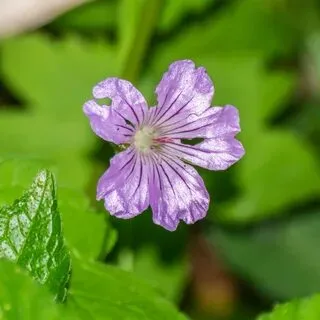
- Spring: Start with a thorough cleanup of any dead foliage and apply a balanced fertilizer. This is also the best time to divide and propagate the plant.
- Summer: Mulch around the base of the plant to retain moisture and keep roots cool. Water regularly during dry periods.
- Autumn: Deadhead spent flowers and cut back foliage to prepare the plant for winter. Apply a layer of mulch to protect roots from frost.
- Winter: Geranium nodosum is hardy and can withstand mild winters. In colder regions, additional mulch or a protective cover may be necessary.
Conclusion
Growing and caring for Geranium nodosum is a rewarding experience, providing beauty and resilience to shaded garden areas. With its adaptable nature and minimal maintenance requirements, this perennial is an excellent choice for both novice and experienced gardeners. By following the outlined care tips and incorporating personal experiences, you can enjoy the charm and elegance of Geranium nodosum in your garden year after year.
